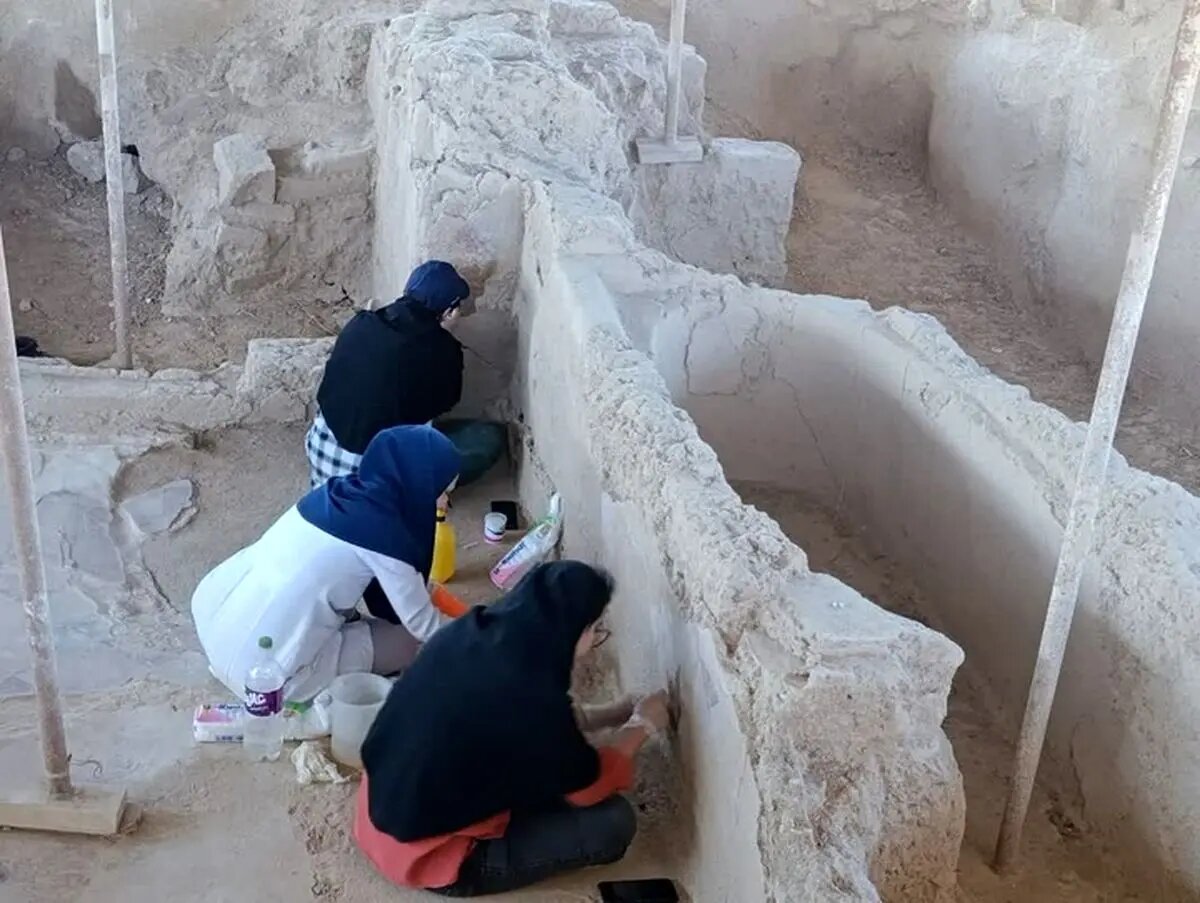1,700-year-old paintings unearthed in southern Iran

TEHRAN - A team of archaeologists has discovered a series of 1,700-year-old paintings in the ancient city of Gur, located three kilometers from Firuzabad, Fars province, southern Iran.
These remarkable findings, dating back to the early 3rd century CE, provide new insight into the artistic and cultural life during the Sassanian Empire.
The discovery was announced on Monday by Mohammad Sabet-Eqlidi, the tourism chief of Fars province. According to him, the paintings were found during excavation and restoration work on a burial site in the ancient city.
“These paintings were uncovered on the surface of two Sassanian-era coffins during the work to organize and protect a burial site in Gur,” he said.
The artworks were created using mineral pigments on a gypsum base, a technique typical of the period, ILNA reported on Monday.
The paintings depict figures in profile and three-quarter views, rendered with great detail and vivid colors, the report said.
These images offer a rare glimpse into the artistic traditions and social customs of the time, likely representing members of the Sassanian aristocracy or specific rituals.
One of the most prominent finds is a 60 by 90 cm wall painting located in a small chamber on the northwestern side of Gur. The chamber’s walls are plastered with gypsum, and on the eastern wall, the painting was discovered.
When comparing it with similar examples in the Palace of Ardashir (which is a Sassanid element of a UNESCO-registered ensemble in Fars province), experts believe the scene portrays a part of aristocratic life or a ceremonial ritual involving prominent Sassanian figures.
According to the report, the wall painting features two distinct human figures: on the right, the image of a young man, although partially damaged, is obvious. His face is painted in profile, but his body is fully frontal, showcasing the detailed craftsmanship. On the left, adjacent to the man, is the image of a woman, portrayed in a similar style but wearing different-colored clothing. She is depicted holding what appears to be a lamb in her arms.
Both figures are framed within a bright green rectangular panel, and five centimeters to the left, a parallel panel containing two additional human figures was found. These figures share the same artistic execution as the ones on the right, and their portrayal offers clues to the symbolic or cultural significance of the scene.
In addition to the wall paintings, geometric floor patterns were discovered. The floor mosaics are characterized by intricate triangular designs, symmetrically arranged in shades of red, green, and orange.
The paintings and mosaics provide an invaluable window into Sassanian art and culture, as it is suggested that they depict aspects of the lives of the empire’s nobility.
The Sassanid epoch is of very high importance in the history of Iran. Under the Sassanids, Persian art and architecture experienced a general renaissance. Architecture often took grandiose proportions, such as some palaces located in Ctesiphon, Firuzabad, and Sarvestan, which are amongst the highlights of the ensemble.
Crafts such as metalwork and gem engraving grew highly sophisticated, yet scholarship was encouraged by the state. In those years, works from both the East and West were translated into Pahlavi, the language of the Sassanians. The Sassanid archaeological landscape also represents a highly efficient system of land use and strategic utilization of natural topography in the creation of the earliest cultural centers of the Sassanid civilization.
AM
Leave a Comment